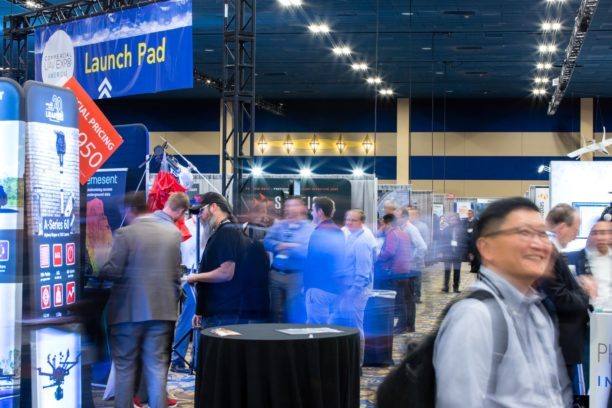The Commercial Drone Alliance
The CDA is also, says Ellman, seeking immediate next steps on the Remote ID for drones regulation (RID) – specifically, asking for the inclusion of a network-based approach, a move that many drone industry representatives say will enhance safety and provide value to the commercial drone industry, beyond the security benefits that the current broadcast-only approach offers.
Ellman and the CDA is also focused on the next expected regulation to hit the commercial drone industry. “2021 is the year of enabling beyond visual line of sight (BVLOS),” says Ellman. “The Holy Grail of our industry.”
Finally, says Ellman, the CDA is working to promote the need for regulatory flexibility and predictability: and to support innovation and leadership.
“We’re working to ensure that the U.S. does not lose its role as an aviation leader throughout the world,” says Ellman.
The Commercial UAV Expo keynotes continues with the FAA Chief Adminstrator Steve Dickson. This year, says Dickson, “Our work to safely scale and integrate drones into the NAS has moved forward at a rapid pace… We’ve accomplished a lot, but we have some important work to do together to get the value out of the technology.”
BVLOS flight is clearly the next important step for the FAA. “There are important risk-based regulations coming down the line,” Dickson said.
While currently BVLOS flight is allowed on a case by case basis, Dickson says that the FAA recognizes an urgent need for regulation. “We know that’s not going to be sustainable….waivers are ad hoc and not scalable. There needs to be a rule for beyond visual line of sight operations and we’re very well aware of that.”
Dickson also mentioned aircraft certification, pointing out that the FAA is evolving the way that they certify certain drones. With developing new regulations and systems, however, means trying to get consensus from stakeholders with sometimes conflicting interests. “The challenge is to make sure that the rulemaking doesn’t end up with the lowest common denominator,” says Dickson. “Not everyone will get exactly what they want, but hopefully we’ll get policy that everyone can agree is good for the industry.”
Advanced Air Mobility
Dickson says that the FAA is looking ahead to advanced air mobility vehicles, a potentially world changing technology that requires a new way of looking at aircraft safety. To meet the needs of this evolving space, Dickson says that the FAA is changing their structure to be more flexible and to work with the wide variety of stakeholders involved. “We’re taking a systems approach, an enterprise approach,” says Dickson. “We’ve established an internal executive council to coordinate all efforts: and we’re working with NASA on the Advanced Air Mobility campaign to help develop certification standards and educate the public.”
As to when we’ll see Advanced Air Mobility, Dickson says it’s sooner than you think. “This is not something that is 5 or 10 years in the future. This is really right around the corner.”
Miriam McNabb is the Editor-in-Chief of DRONELIFE and CEO of JobForDrones, a professional drone services marketplace, and a fascinated observer of the emerging drone industry and the regulatory environment for drones. Miriam has penned over 3,000 articles focused on the commercial drone space and is an international speaker and recognized figure in the industry. Miriam has a degree from the University of Chicago and over 20 years of experience in high tech sales and marketing for new technologies.
For drone industry consulting or writing, Email Miriam.
TWITTER:@spaldingbarker
Subscribe to DroneLife here.
